Autopilot: Action - AB Split
How to use the AB Split action
The AB Split action allows you to randomly split contacts into two groups:

The paths default to 50% each, however you can change this if you'd like a larger or smaller portion to flow down a particular path:
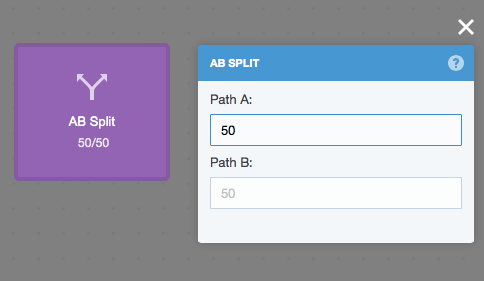
To configure this action, you need to connect both the A and B paths to another shape:
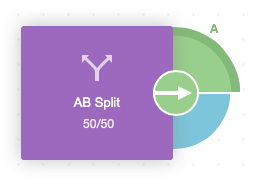
Here's an example of a Journey using this action to assign leads to two different sales people:
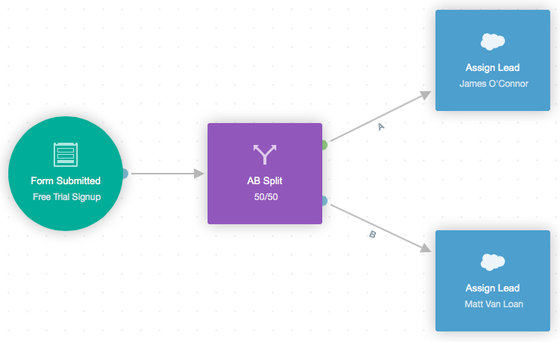
How to conduct an email AB split test
You can conduct an email AB split test by using the following Journey:
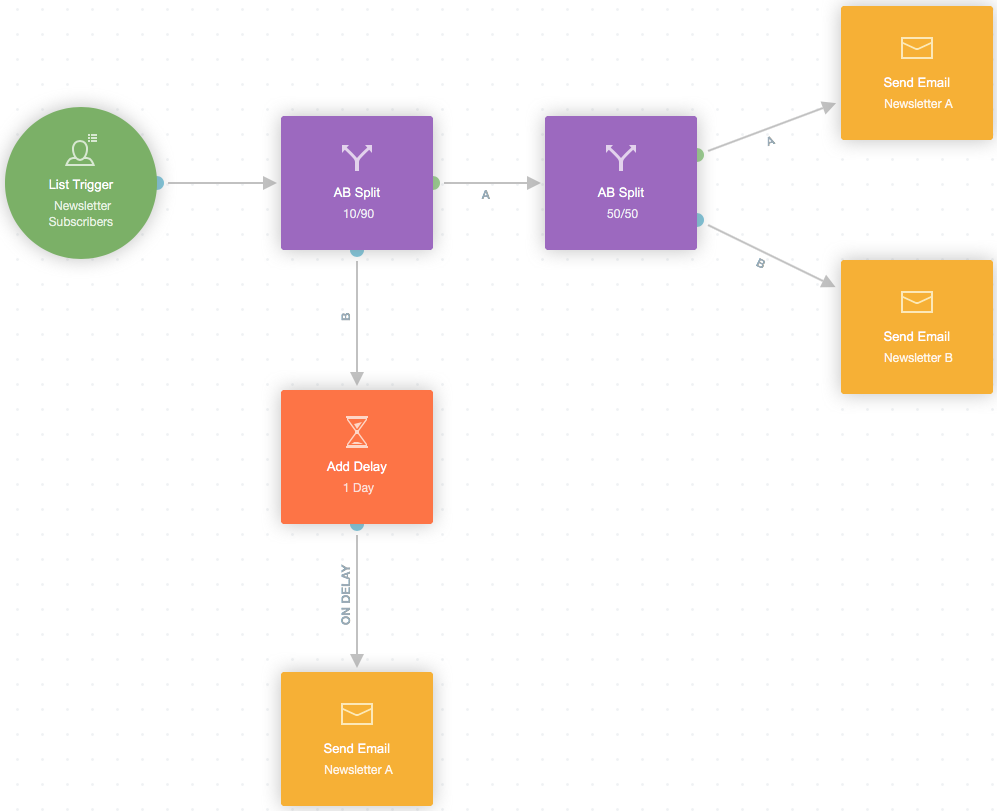
Let's take a look at the components of this Journey. The first thing you'll notice is that the first AB Split action...

...splits off 10% of the contacts on the list into the email AB split test:
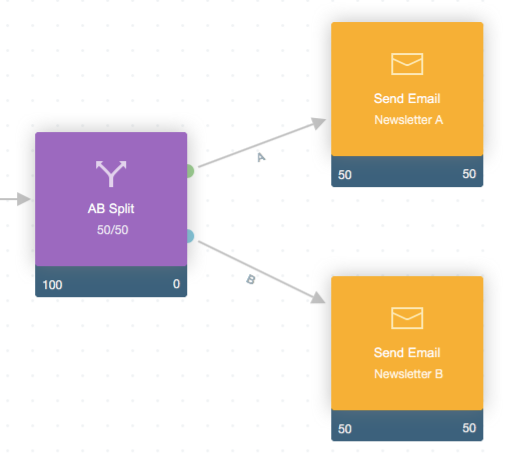
To create your email variants, first finalize variant "A", and then duplicate it (i.e. make a copy of it). You can learn how to do so here. This will allow you to modify what you'd like to test (e.g. the subject line). Remember to name each variant in a way that will make it easy to identify:
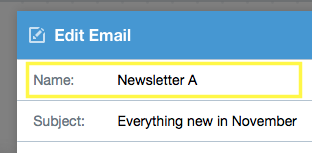
The other 90% of the contacts on the list go into a delay. Please ensure you consider the delay carefully before publishing the journey, as contacts are allocated the settings that are live when they enter the shape. Any changes to the delay settings will only apply to contacts that enter the delay in the future.
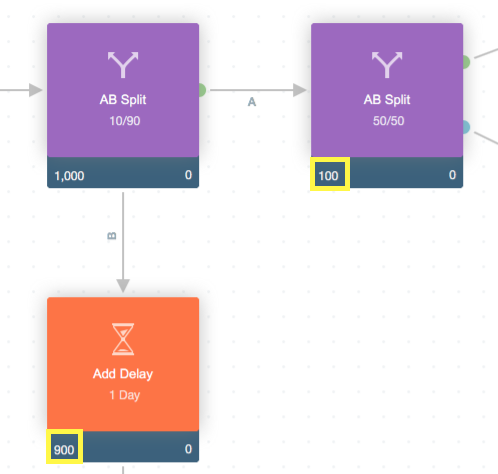
In the example above, you'll notice that the delay is connected to variant "A" as a fall back:
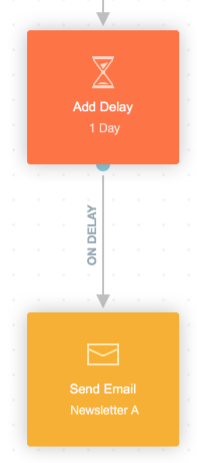
However, before the delay expires, you should check whether the "A" or "B" variant performed better using the Reports app, or by clicking on the report icon on Live View:

You can then choose the winning email on the Send Email action:
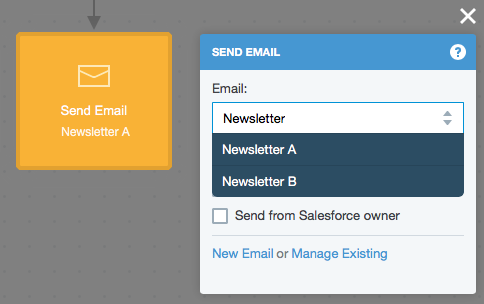
Don't forget to publish the Journey again if you change the winning email.
Remember, you can use the AB Split action to test more than just email. For example, you might use it to test Headsup messages.
FAQ
What happens if I change the split percentages?
If you make a change to the percentages and re-publish the Journey this resets the allocation. In other words, contacts will be split based on the number flowing into the action in the future, as opposed to the number that have flowed into it in the past.
